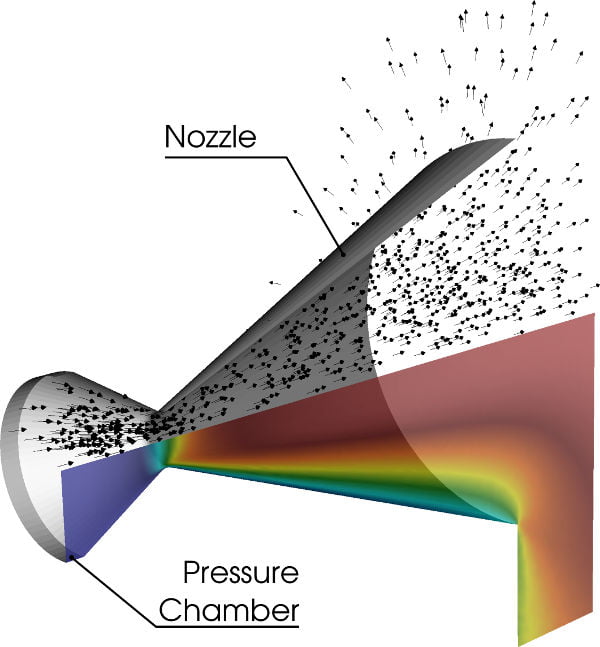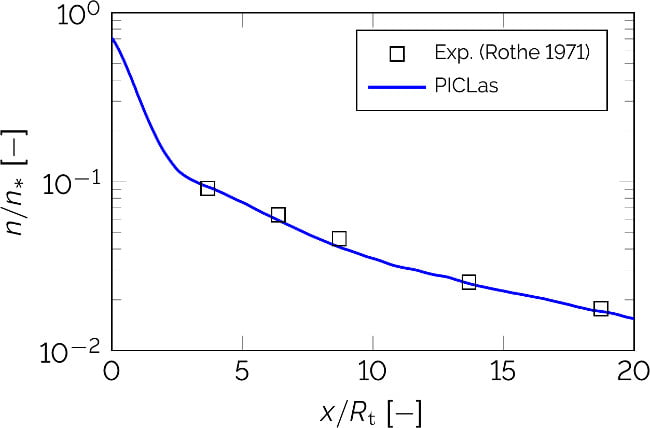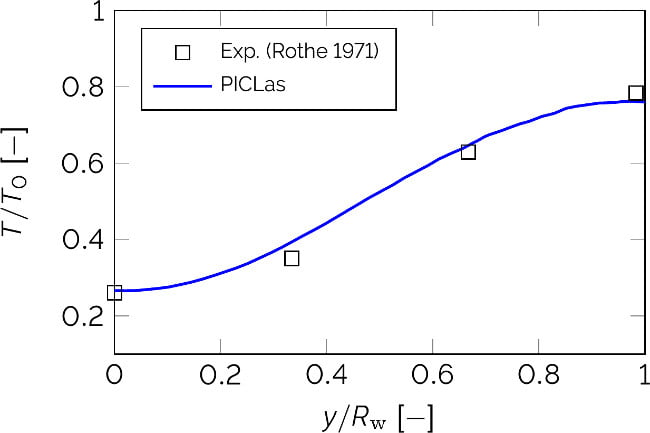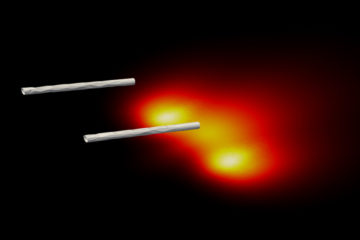Cold gas thrusters are typically employed in satellites due to their reduced complexity, reliability and low cost. Due to plume impingement, the exhaust of the thruster can pose a contamination risk for mission critical components or even result in a reduced performance of the thruster itself. Additionally, if an array of thrusters is utilized, the interaction between the nozzle exhausts (or the plume-plume interaction) becomes of interest for the performance characterization. Therefore, numerical simulations are used to predict the effect of the thruster plume on its surroundings.
Large density gradients
Large density gradients within the cold gas thruster ranging from continuum flow in the pressure chamber up to free molecular flow in the far wake of the nozzle pose a great challenge for a single numerical method. For this purpose, the Direct Simulation Monte Carlo (DSMC) module and the particle-based ellipsoidal statistical Bhatnagar-Gross-Krook (ESBGK) method of PICLas were coupled to exploit the advantages of both methods. While the DSMC method offers accurate results in rarefied and non-equilibrium flows, the BGK method enables a substantial increase in computational performance in high density regions such as the pressure chamber.
Coupled ESBGK-DSMC simulation
The geometry of the micro thruster (with a length of roughly 60 millimeters and a throat diameter of 2.5 millimeters) is based on an experimental setup available in literature. These measurements were also utilized to validate the numerical approach. The thruster uses nitrogen as propellant gas, which is fed into the pressure chamber at a pressure of 474 Pascal and a temperature of 300° Kelvin. Exemplary results are shown in terms of the normalized number density along the symmetry axis of the nozzle and the normalized rotational temperature profile in the exit plane in the figures. The excellent agreement between the experimental measurements and the numerical simulation enables the use of PICLas as a predictive tool for future thruster development.
By using the coupled ESBGK-DSMC approach, where the ESBGK method was utilized only in the pressure chamber as well as the converging nozzle part, the simulation time could be drastically reduced by a factor of 20 000 as compared with conventional DSMC simulations. This allows to simulate the complete cold gas thruster (or an array of multiple thrusters) within a single simulation.
More information about the underlying theory and modelling can be found here:
- Pfeiffer, M., Mirza, A., & Nizenkov, P. (2019). Evaluation of particle-based continuum methods for a coupling with the direct simulation Monte Carlo method based on a nozzle expansion. Physics of Fluids, 31(7), 073601.




